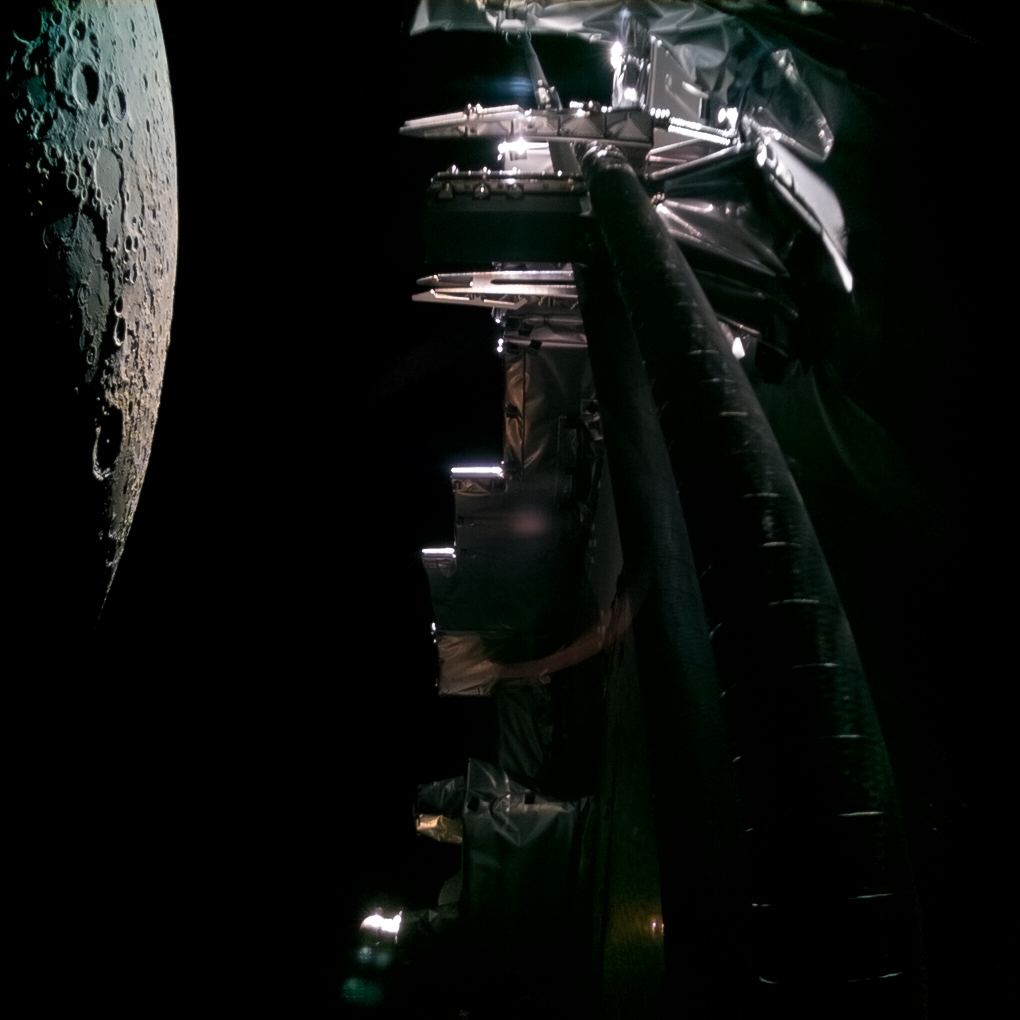
(Image credit: ESA/Juice/JMC; acknowledgement: Simeon Schmauß & Mark McCaughrean (image processing)
Europe’s JUICE Jupiter probe swung by the moon for a “gravity assist” on Monday (Aug. 19), and it snapped some photos to commemorate the historic encounter.
JUICE (short for Jupiter Icy Moons Explorer) came within a mere 465 miles (750 kilometers) of the lunar surface on Monday evening, on the first leg of an unprecedented gravity-assist doubleheader. The second leg comes on Tuesday evening, when the probe flies by Earth.
JUICE chronicled Monday’s lunar encounter with some imagery, which it captured using its two onboard monitoring cameras (which were designed to confirm the deployment of the probe’s solar arrays and scientific instruments).
And the European Space Agency (ESA) shared these photos with the world as they came down to Earth, raw and unprocessed, via a live webcast that included commentary from some JUICE team members.

JUICE launched in April 2023, on a mission to study Jupiter and three of its four big Galilean moons — Ganymede, Callisto and Europa. All three are thought to possess oceans of liquid water beneath their icy shells, and Europa’s is likely in contact with a rocky seafloor, making possible a variety of intriguing chemical reactions. (The seas of Ganymede and Callisto may be sandwiched between layers of ice.)
This week’s moon and Earth flybys are historic; no other mission has ever performed a double gravity assist, according to ESA. The two maneuvers will set the probe on course for a similar encounter with Venus in August 2025, which will slingshot JUICE out toward the giant planet.

“Actually, this flyby is a braking maneuver, so we do not accelerate JUICE, in the sense of gaining speed relative to the sun,” Ignacio Tanco, JUICE spacecraft operations manager, said during ESA’s lunar flyby webcast.
“What we found is that by following this sequence of first Earth and then Venus, we manage to save about half a year of cruise time and arrive to Jupiter around July 2031,” Tanco added. “This sort of counterintuitive approach of braking first, in fact, results ultimately in the shortest possible cruise phase.”
To achieve the same change in velocity achieved by this week’s two flybys via engine burns, the JUICE team would’ve had to use pretty much all the propellant in the probe’s tanks, Tanco said.

JUICE team members say the assist worked perfectly. “It was a flawless maneuver! No fine-tuning or correction is needed before tonight’s Earth flyby,” ESA Operations posted to X on Aug. 20.
Our flight dynamics team has analysed @ESA_JUICE’s new trajectory following last night’s gravity assist at the Moon. Their conclusion? It was a flawless manoeuvre! No fine-tuning or correction is needed before tonight’s Earth flyby. 🥳 pic.twitter.com/0lTzzIbbm9August 20, 2024
During its Earth flyby on Tuesday, JUICE will come within a mere 4,250 miles (6,840 km) of Earth. If all goes according to plan, closest approach will occur at 5:57 p.m. EDT (2157 GMT) over the North Pacific Ocean.
Amateur astronomers could theoretically see the probe through a telescope during the encounter, JUICE team members said — provided they’re in Alaska or some other spot in or around the North Pacific.
There won’t be another flyby-photo webcast during Tuesday’s flyby, however. ESA’s Pacific region telemetry-receiving stations are all in the Southern Hemisphere, so the JUICE team won’t be able to communicate with the probe during the encounter, team members said on Monday.
Editor’s note: This story was updated on Aug. 20 to include processed images from JUICE’s lunar flyby and to add a social media post from ESA’s Operations team confirming the maneuver worked as intended.
Join our Space Forums to keep talking space on the latest missions, night sky and more! And if you have a news tip, correction or comment, let us know at: community@space.com.
Note: This article have been indexed to our site. We do not claim legitimacy, ownership or copyright of any of the content above. To see the article at original source Click Here













